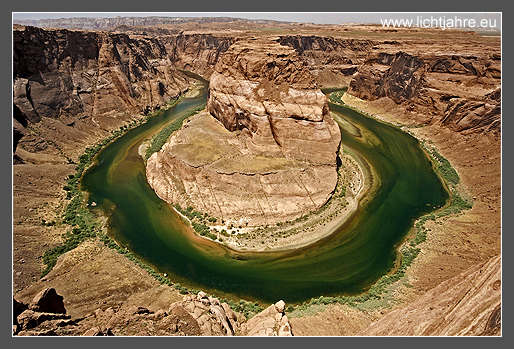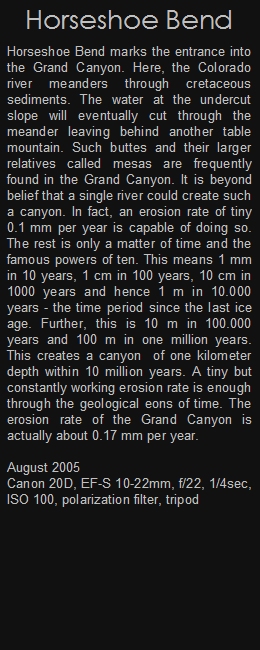

Horseshoe Bend
Horseshoe Bend marks the entrance into the Grand Canyon. Here, the Colorado river meanders through cretaceous sediments. The water at the undercut slope will eventually cut through the meander leaving behind another table mountain. Such buttes and their larger relatives called mesas are frequently found in the Grand Canyon. It is beyond belief that a single river could create such a canyon. In fact, an erosion rate of tiny 0.1 mm per year is capable of doing so. The rest is only a matter of time and the famous powers of ten. This means 1 mm in 10 years, 1 cm in 100 years, 10 cm in 1000 years and hence 1 m in 10.000 years - the time period since the last ice age. Further, this is 10 m in 100.000 years and 100 m in one million years. This creates a canyon of one kilometer depth within 10 million years. A tiny but constantly working erosion rate is enough through the geological eons of time. The erosion rate of the Grand Canyon is actually about 0.17 mm per year.
August 2005
Canon 20D, EF-S 10-22mm, f/22, 1/4sec, ISO 100, polarization filter, tripod




















